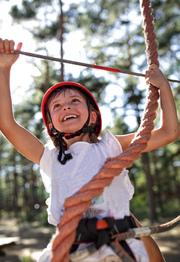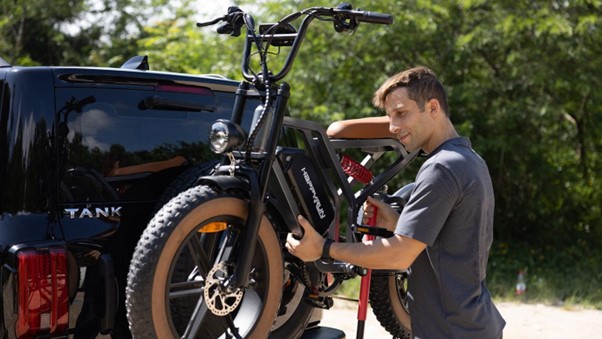Lou Posner Shares Investing 101 for College Students and How To Get Started with Your First Investment
As college students stand ready to embark on that great adventure into professional life, the idea of investing might seem distant. When the subject does comes up with their parents or mentors, it’s natural for it to seem overwhelming. This is the case for young and old alike, especially for those who have put it off to a later day and are not playing catch-up.
Yet, understanding the basics of personal finance and investment strategies early on can pave the way to financial freedom and long-term wealth. Lou Posner is dedicated to clarifying the complexities of investing for college students, providing practical advice and feasible strategies even with modest funds.
Whether you’re aiming to save for a significant purchase, establish your retirement savings, or achieve financial independence, embarking on your investment journey in college can position you well ahead in your financial goals.
Why Should College Students Start Investing?
As a college student, you might be wondering if it’s too soon to invest. After all, you have student loans, living expenses, and tuition fees to think about. But the truth is, the earlier you start investing, the better off you’ll be. Time is a powerful investment ally due to compounding interest, which allows your earnings to generate their earnings, snowballing your wealth over time.
Investing during college can build a healthy financial habit, help you learn about the market, and set you on the path to financial independence. By starting small and early, you can take advantage of your investments’ long-term growth potential, even if the amounts seem insignificant initially.
Here’s how to get started.
Understanding the Basics of Investment and Risk
An investment is an asset or item acquired to generate income or appreciation over time. The primary types of investments you might encounter include stocks, bonds, mutual funds, exchange-traded funds (ETFs), and entities like Auctus Fund Management. Each has its characteristics and suits different investment goals. Risk exists in every investment.
Risk is the possibility that your investment may incur a loss or not yield the expected returns. Higher risk typically is associated with the potential for higher returns, but it also means there’s a greater chance of losing money. Understanding your risk tolerance—how much volatility or downward fluctuations you can stomach—will help you form your investment strategy.
Identifying Your Investment Goals
Before selecting your investments, it is crucial to define your objectives. Are you investing for short-term goals, such as buying a car after graduation, or long-term goals, like retirement? The timeline of your goal will dictate the type of investment you choose.
College is a great time to start saving for those long-term goals, which could be decades away. The advantage of being young is that you can take higher risks to pursue higher returns. Knowing your goals will guide you in building an investment portfolio that aligns with your needs.
Creating Your First Portfolio
A portfolio is a collection of your investments. Diversification is key to creating a well-rounded, balanced portfolio. It involves spreading your investments among various asset classes to reduce risk.
A good rule of thumb for beginners with limited funds is the 60/40 rule, where 60% of your portfolio is in stocks (for potentially higher returns but also higher risk) and 40% in bonds (which are generally less risky but offer lower returns). This mix can vary based on your risk tolerance and investment horizon.
A common and simple way for a college student to start investing is through a robo-advisor, a digital platform that automatically creates a diversified portfolio based on your risk tolerance and investment goals.
Choosing Where to Invest
The two primary avenues for investing are retirement accounts and taxable brokerage accounts. Retirement accounts like a Roth IRA or 401(k) offer tax benefits but restrict when you can access your money. Taxable brokerage accounts have no limitations but don’t offer the same tax advantages.
For college students, a Roth IRA can be an excellent choice. You can contribute post-tax dollars and potentially withdraw your earnings tax-free after age 59 ½. This setup is particularly appealing given that most students are now in a lower tax bracket than they will be once they start their careers.
Investing in a College Budget
Investing doesn’t require a large amount of capital. Most investment platforms now allow you to start with as little as $1. To invest on a tight budget, consider apps allowing fractional shares or low-cost index funds.
With the power of compounding, even small, consistent investments can grow significantly over time. Automating your investments from your paycheck or bank account can make it easier to stay on track, take the emotion out of investing, and ensure you don’t miss a contribution.
Managing Your Investments During College
Starting an investment portfolio is just the beginning. Regularly reviewing and adjusting your investments is a vital part of successful investing. As you near your short-term goals or risk tolerance changes, you may need to rebalance your portfolio. Rebalancing involves selling off some investments and buying others to maintain your desired asset allocation.
Staying informed about the financial market is important, but be cautious of overtrading, leading to higher fees and potential losses. Instead, focus on long-term strategies and resist the urge to buy or sell based on short-term market fluctuations.
Final Thoughts
Lou Posner says investing as a college student can seem daunting, but it’s an invaluable step toward establishing financial stability and independence. Starting early sets the foundation for a habit that will enrich your life beyond college. Remember, the key to successful investing lies not in timing the market but in time in the market.
You can turn even the most modest investments into a substantial nest egg with patience, consistency, and a well-thought-out strategy. It’s also essential to continue educating yourself about financial markets and investment strategies, as this knowledge will empower you to make informed decisions. Start small, think big, and watch your financial future unfold.
Reading Resources for for Parents and Educators:
Effective strategies to teach students how to save money.
Teaching Kids About Finances and Investments from a Young Age.










 Explore the Safe Search Engine -
Explore the Safe Search Engine -